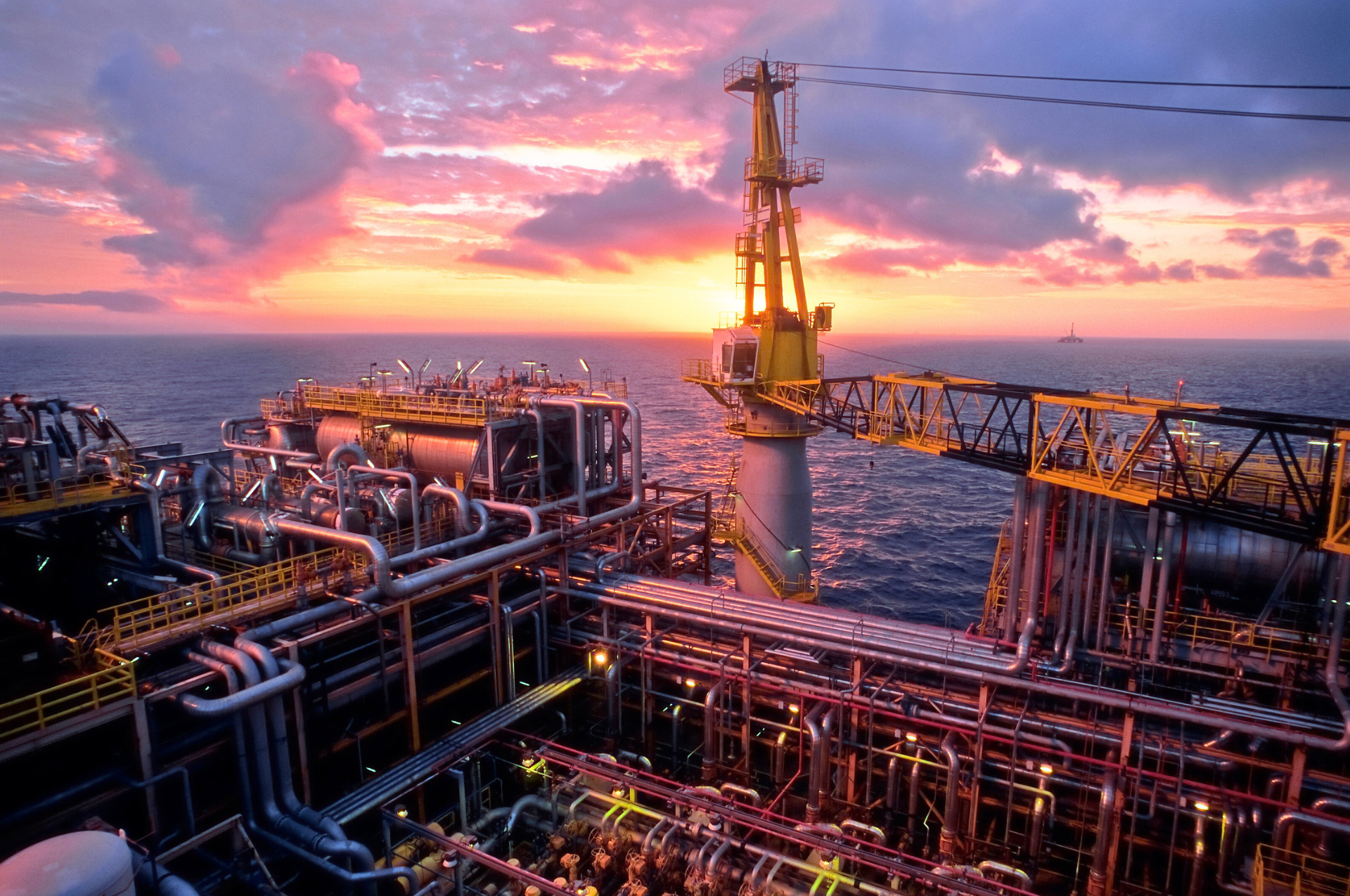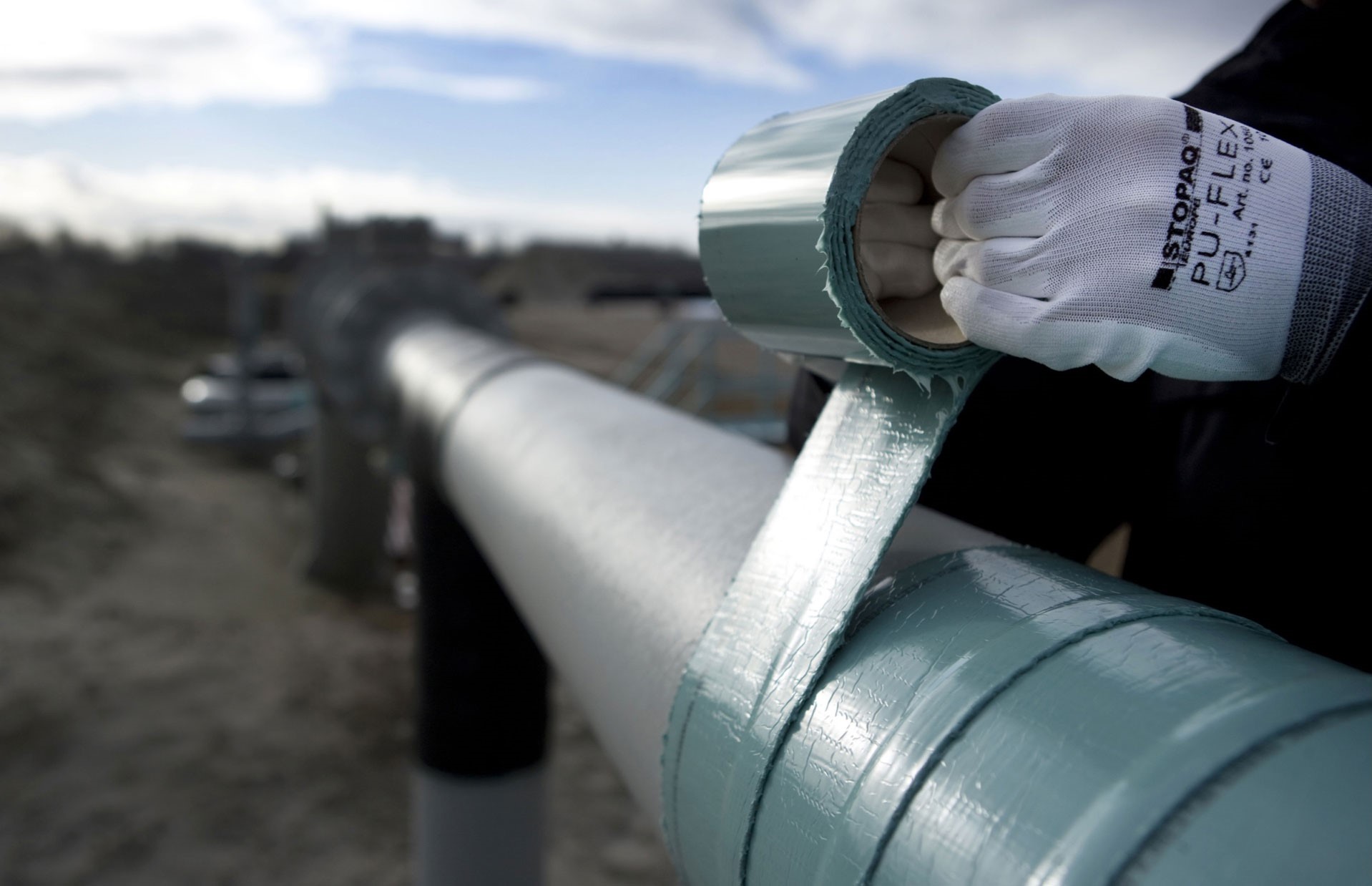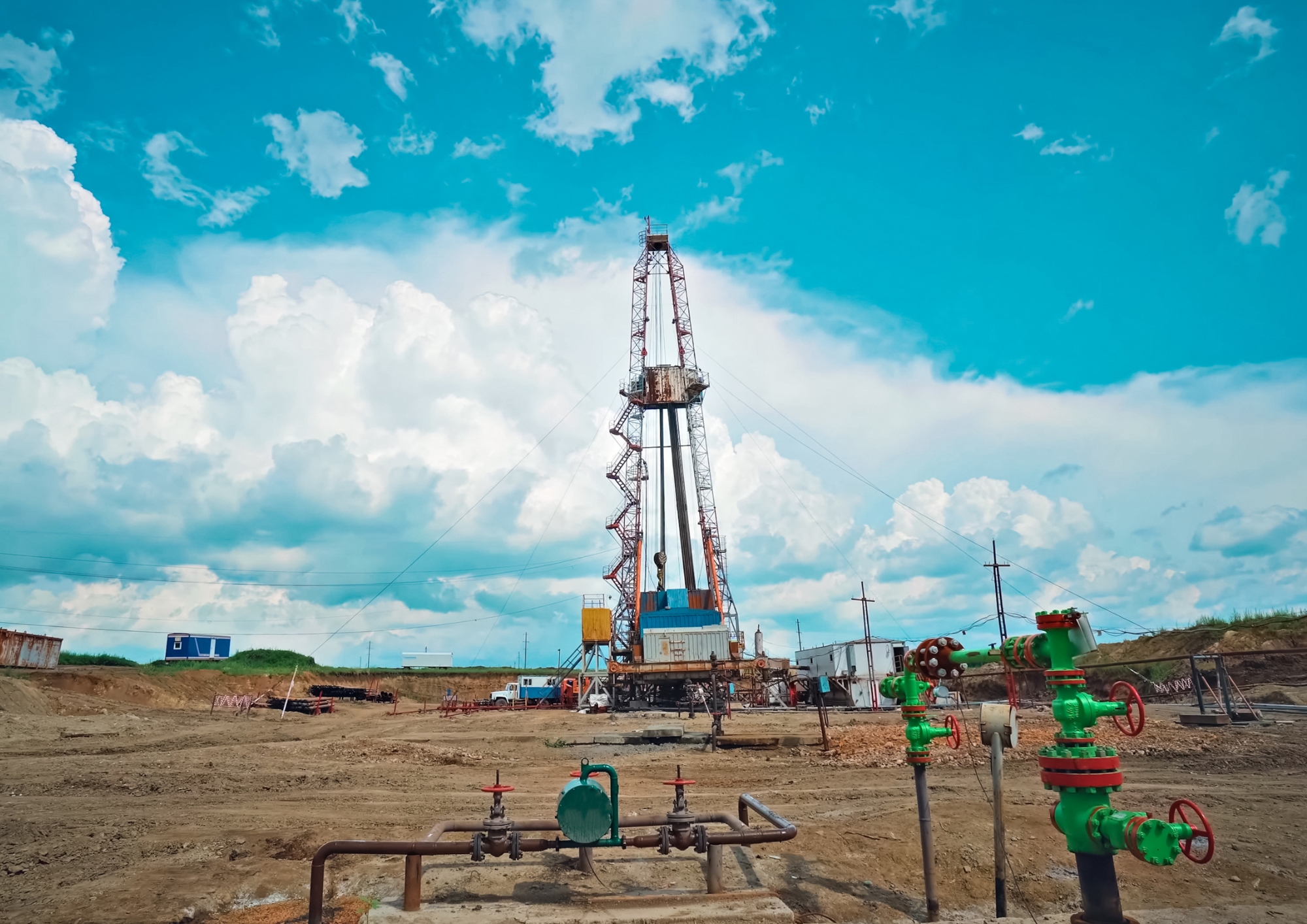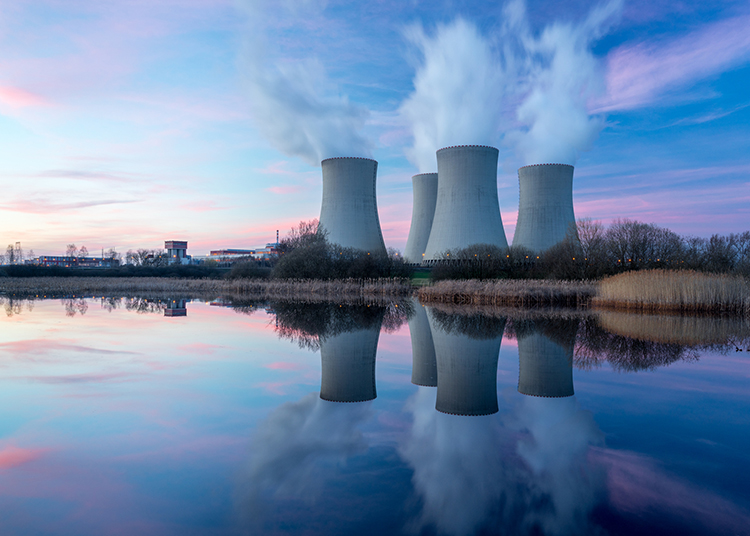

WAND TM Sensor Applications for Offshore Wellhead Flowlines
The rate of sand erosion needed to be determined along the wellhead flowlines to enable predictive maintenance.
Overview
Customer: Offshore oil rig operator
Industry: Offshore production
Structures: Offshore wellhead flowline straight pipes and elbows
Operating temperature: Ambient
Type of degradation: Sand erosion
Frequency of inspection: Twice/month
Challenges
Specialist inspectors were needed to be flown in by helicopter to perform manual UT readings of the wellhead piping. Due to the high monitoring frequency, this incurred considerable costs.
The rate of sand erosion needed to be determined along the offshore wellhead flowlines to enable predictive maintenance. Manual UT was being used for this, however poor measurement repeatability, due to human-error, was preventing accurate trending of the erosion rate.
Solution
The customer replaced manual UT single point readings with WAND sensors at a number of thickness measurement locations along their offshore wellhead flowline piping. Staff already stationed on the platform could start taking thickness readings with the WAND handheld data collector.
How did they benefit from WAND?
Because personnel already on the platform were able to take thickness readings, the demand for specialist inspectors was reduced. This allowed the customer to save considerably on transport costs.
Using WAND, thickness measurements from the same precise location could be taken each time. This meant the rate of sand erosion could be accurately determined, allowing the customer to start using the data for predictive maintenance.
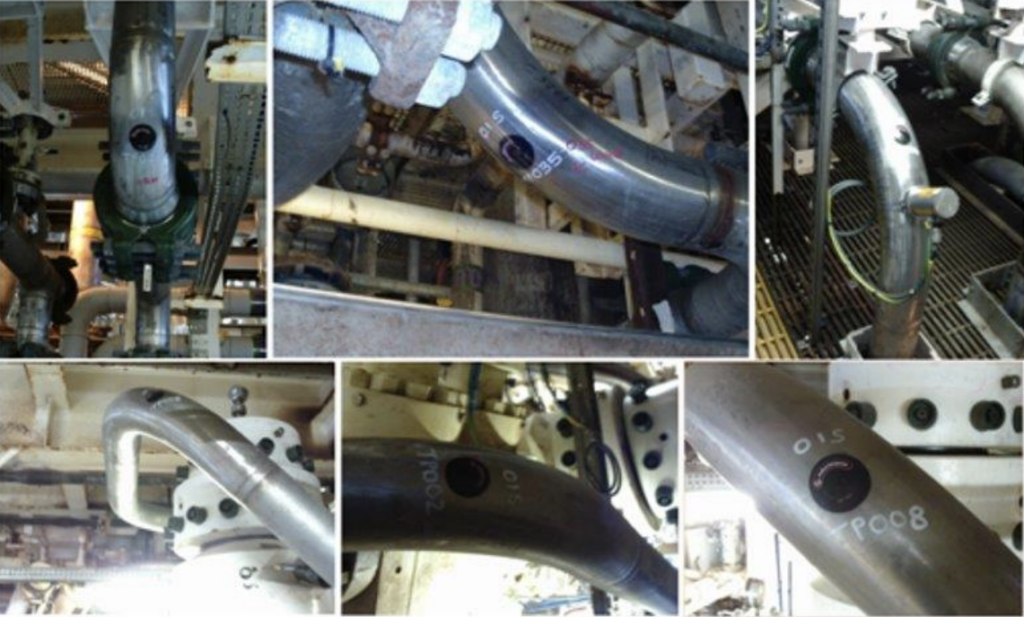
Examples of sensors installed on some wellhead flowline elbows.

